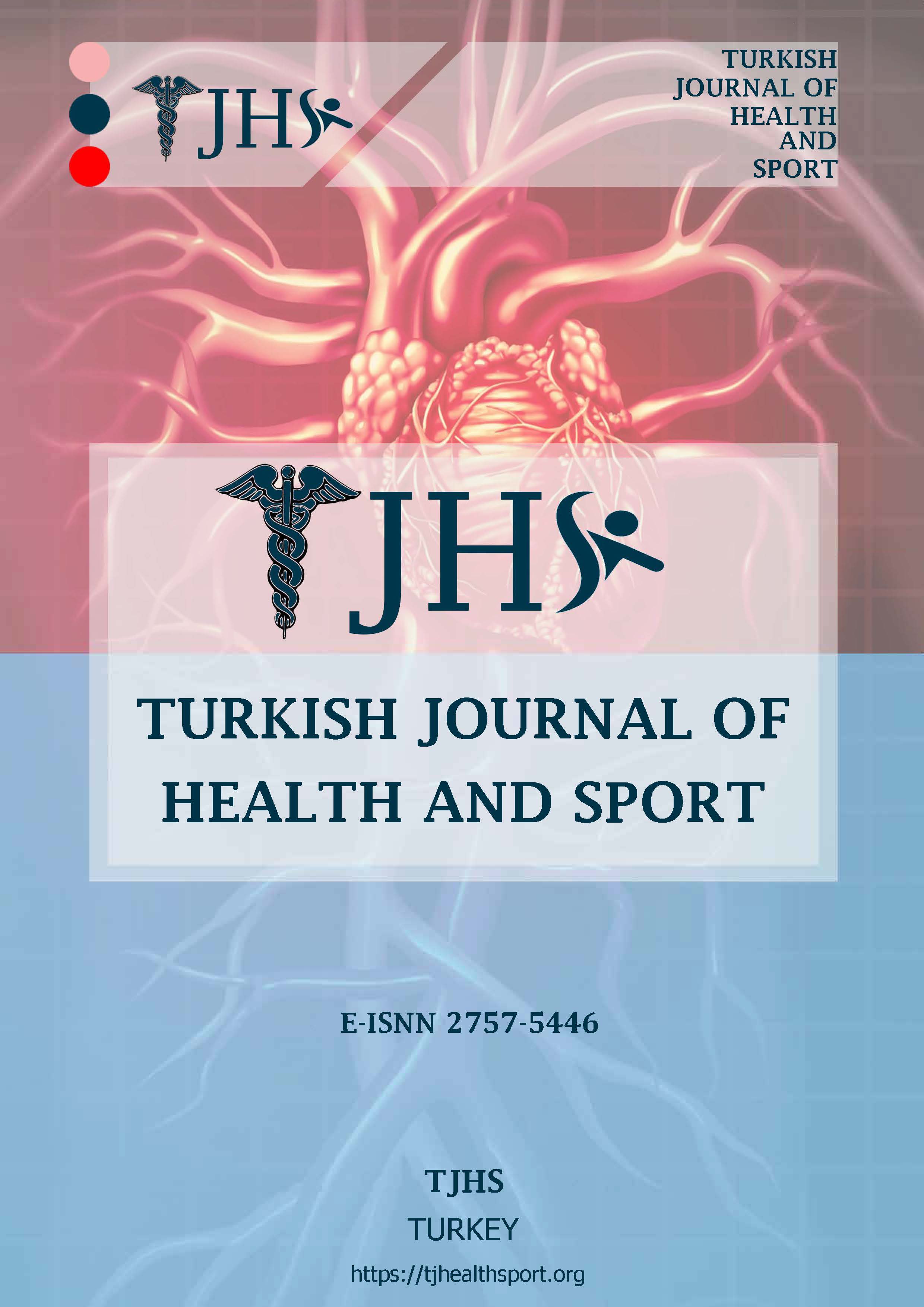Hemodiyaliz Tedavisi Alan Erişkin Hastalarda Geriatrik Beslenme Risk İndeksi, Üre Azalma Oranı, Antropometrik Ölçümler ve Biyokimyasal Göstergeler Arasındaki İlişki: Kesitsel Bir Çalışma
Author :
Abstract
Giriş: Hemodiyaliz tedavisinden sonra en sık görülen durumun malnütrisyon olması ve mortalite riskini
artırması nedeniyle hastaların beslenme durumunun değerlendirilmesi çok önemlidir. Hemodiyaliz tedavisi
alan hastalarda Geriatrik Beslenme Risk İndeksi (GNRI), antropometrik ölçümler, biyokimyasal belirteçler ve
Üre Azalma Oranı (URR) arasındaki ilişkileri değerlendirmeyi amaçladık.
Yöntem: Bu çalışmaya en az son 6 aydır haftada 3 gün hemodiyaliz tedavisi alan 66 hasta dahil edildi. Tüm
hastaların diyaliz seansından sonra vücut ağırlığı, boy uzunluğu, üst orta kol çevresi, bel çevresi, triseps deri
kıvrım kalınlığı, boyun çevresi ve baldır çevresi ölçümleri alındı. Prediyaliz kan örnekleri bir gece aç kaldıktan
sonra toplandı. Tüm laboratuvar parametreleri standart laboratuvar yöntemleri kullanılarak ölçüldü. Verilerin
analizinde SPSS (Statistical Package for the Social Sciences) paket programı kullanıldı. P değerinin <0,01 ve
<0,05 olması istatistiksel olarak anlamlı kabul edildi.
Bulgular: Çalışmaya ortalama yaşları 62,1±13,1 yıl olan %47 erkek ve %53 kadın dahil edildi. Ortalama GNRI
skoru 107,0±12,1 idi ve hastaların %19,7’sinde malnütrisyon saptandı. GNRI ile antropometrik ölçümler
arasında pozitif, URR ile negatif korelasyon olduğu bulundu. Hiyerarşik doğrusal regresyon analizi, toplam
protein ve ferritin düzeylerinin GNRI’yi önemli ölçüde öngördüğünü gösterdi.
Sonuç: Kronik böbrek hastalığının yönetiminde beslenme durumu, biyokimyasal gösterge ve diyaliz
yeterliliğinin birlikte değerlendirilmesi önemlidir. Türkiye’de bu alanda yapılan çalışma sayısı sınırlıdır.
Keywords
Abstract
Background: It is very important to evaluate the nutritional status of patients, as malnutrition is the most common condition after hemodialysis treatment and increases the risk of mortality. We aimed to evaluate the relationships between Geriatric Nutritional Risk Index (GNRI), anthropometric measurement, biochemical markers, and Urea Reduction Rate (URR) of patients receiving hemodialysis treatment.
Methods: This study included 66 patients who received hemodialysis treatment 3 days a week for at least the last 6 months. Height, weight, mid-arm circumference, waist circumference, triceps skinfold thickness, neck circumference and calf circumference of all patients were measured after the dialysis session. Predialysis blood samples were taken after an overnight fast. All laboratory parameters were measured using standard laboratory methods. SPSS (Statistical Package for the Social Sciences) package program was used to analyze the data. P value of <0.01 and <0.05 was considered as statistically significant.
Results: 47% male and 53% female, with a mean age of 62.1±13.1 years, were included in the study. The mean GNRI score was 107.0±12.1, and 19.7% of the patients were found to have malnutrition. There was a positive correlation between GNRI and anthropometric measurement, negative correlation with URR. Hierarchical linear regression analysis showed that total protein and ferritin significantly predicted the GNRI.
Conclusion: It is important to consider nutritional status, biochemical indicator and dialysis adequacy together for the management of chronic kidney disease. The number of studies in this field in Turkey is limited.





